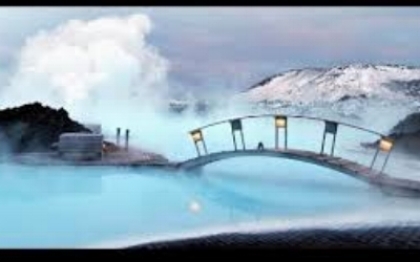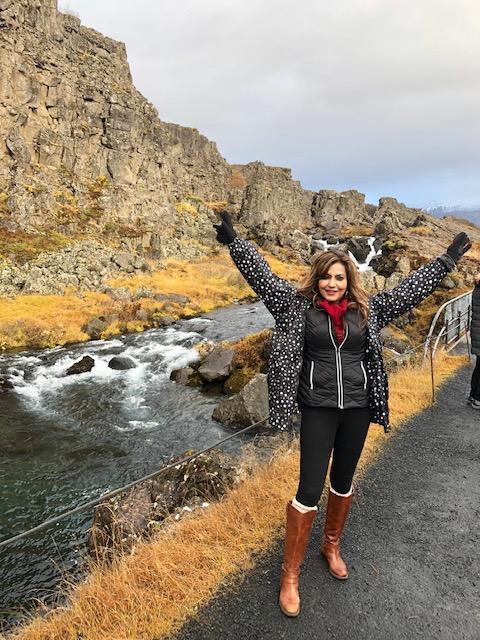Inside Edition to Iceland: The Mystique of the Blue Lagoon

Let me begin by saying that I did not expect to fall in love with the blue lagoon. Given that 1), it is heavily marketed to international tourists, 2), all celebrity visits to Iceland feature the blue lagoon as a top Instagrammable moment and, 3), it was artificially created from wastewater pumped out by a neighboring geothermal power station, I was prepared to shudder delicately and turn up my highbrow nose at such an obvious touristy attraction. Since I’m not a spa aficionado, I expected to spend no more than fifteen-twenty minutes in testing the waters and finding it too crowded or too cold (the outside temperature being a bone-chilling 38°) I would deign it to be “done.” I would clap my gloved hands briskly together as if to say, “checked off the bucket list” and stride off to find the next big adventure.
I ended up frolicking in the blue waters of the lagoon for two hours without getting bored with the experience. Despite its popularity, the blue lagoon remains an eerie, mystical destination. Here are the top reasons why the blue lagoon is a must-see-must-relish experience:
The Inside Edition to Iceland; Part 1

When you first land in Reykjavik, you think you’ve landed on Mars. All you see is a dark, rock-strewn landscape and black lava mountains under angry grey skies. As you drive downtown from the airport, a strong smell of sulphur assaults your nose. What comes to mind is the volcanic eruption of 2010 which disrupted air travel across Western and Northern Europe. But two days into your trip and you begin to see the appeal of Iceland: there aren’t many countries where you can visit thermal springs with a boiling temperature of 100°F and icy glaciers in the same afternoon.
It’s no wonder Iceland’s tourism is booming.
